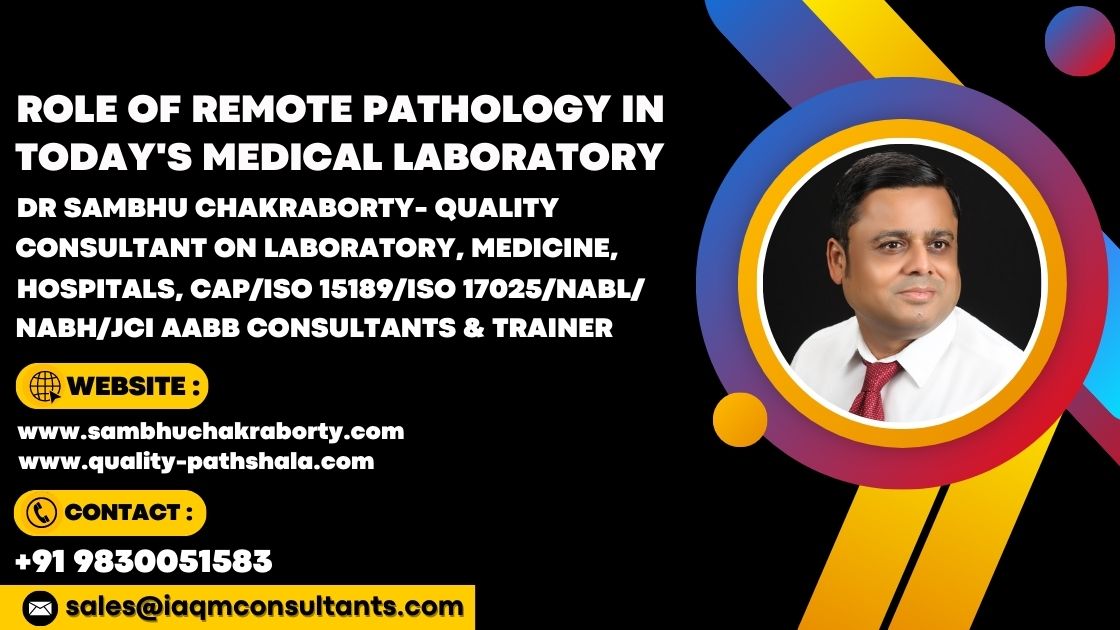Remote pathology, also known as telepathology, refers to the practice of transmitting pathology images (such as histopathology slides) and other relevant data over a distance for the purpose of consultation, diagnosis, and collaboration among pathologists and other medical professionals. It plays a significant role in today’s medical laboratory landscape in several ways:
- Consultation and Second Opinions: Remote pathology enables pathologists to seek second opinions or consultations from experts located in different geographical areas. This is particularly valuable for challenging cases or rare conditions where specialized expertise might not be available locally.
- Access to Specialized Expertise: Not all medical facilities have access to a wide range of specialized pathologists. Remote pathology allows smaller or rural laboratories to tap into the knowledge of experts in various fields without the need for these experts to physically be present at the location.
- Reducing Geographic Barriers: Telepathology overcomes geographical barriers, allowing pathologists and healthcare providers to collaborate seamlessly regardless of their physical location. This is particularly beneficial in regions with limited healthcare infrastructure.
- Medical Education and Training: Remote pathology can be used for educational purposes, such as training new pathologists or medical students. Pathology images and cases can be shared for teaching and learning purposes, enhancing the educational experience.
- Emergency Consultations: In emergency situations, quick access to expert opinions can be critical for making rapid decisions about patient care. Remote pathology facilitates immediate consultations, helping healthcare providers make informed decisions.
- Quality Assurance and Peer Review: Telepathology enables peer review and quality assurance processes. Pathologists can review each other’s work, provide feedback, and ensure the accuracy of diagnoses.
- Research Collaboration: Pathologists and researchers from different institutions can collaborate remotely on research projects by sharing images, data, and findings. This enhances the potential for broader research collaborations.
- Efficiency and Workflow Optimization: Remote pathology can lead to more efficient workflows. Instead of physically transporting slides, images can be quickly shared electronically, reducing turnaround times for diagnoses.
- Digital Archiving: Remote pathology involves the creation of digital images of slides. These digital archives can serve as a valuable resource for long-term storage, retrieval, and reference.
- Global Health Initiatives: Remote pathology can support global health efforts by connecting medical professionals in resource-limited regions with experts in more developed areas. This facilitates diagnostics and improves patient care in underserved regions.
It’s important to note that while remote pathology offers many benefits, there are also considerations around data security, image quality, regulatory compliance, and the need for standardized protocols. Advances in digital imaging technology and secure communication platforms have significantly improved the feasibility and effectiveness of remote pathology, making it an integral part of modern medical laboratories.
About the author
Dr. Sambhu Chakraborty is a distinguished consultant in quality accreditation for laboratories and hospitals. With a leadership portfolio that includes directorial roles in two laboratory organizations and a consulting firm, as well as chairmanship in a prominent laboratory organization, Dr. Chakraborty is a respected voice in the field. For further engagement or inquiries, Dr. Chakraborty can be contacted through email at director@iaqmconsultants.com and info@sambhuchakraborty.com. Additional resourcesand contact information are available on his websites, https://www.quality-pathshala.com and https://www.sambhuchakraborty.com, or via WhatsApp at +919830051583
